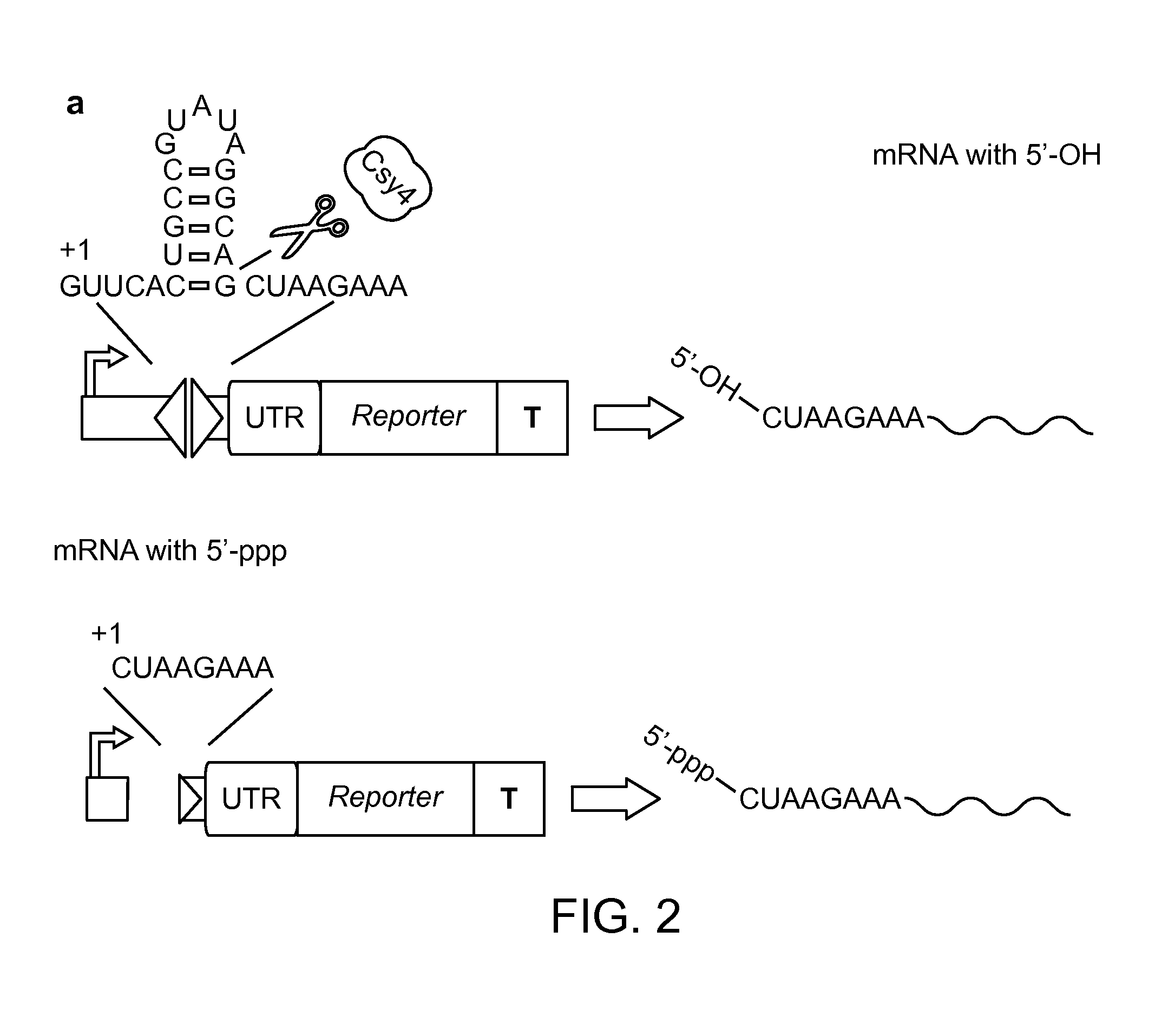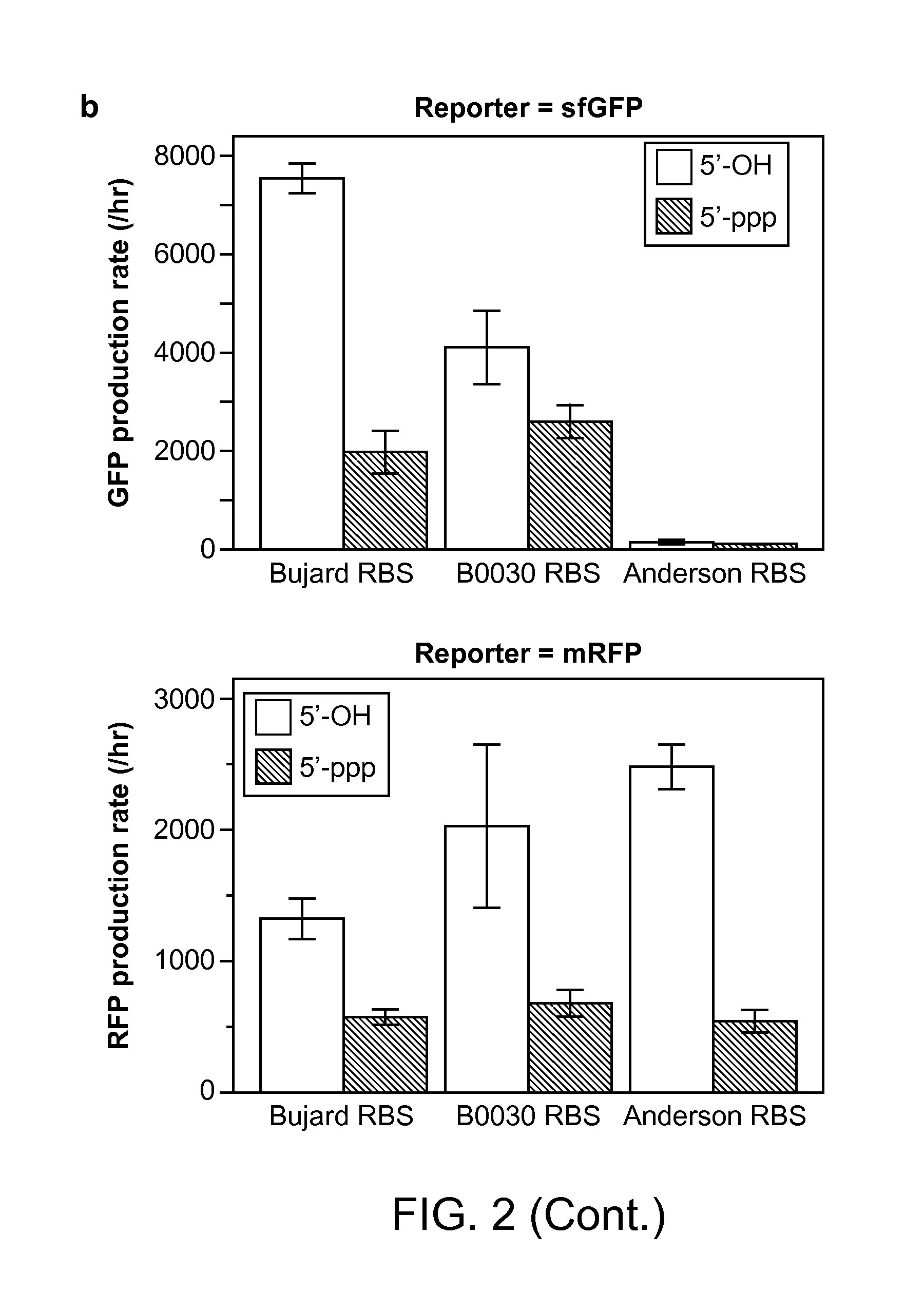Methods and Compositions for Controlling Gene Expression by RNA Processing
a technology of gene expression and composition, applied in the field of methods and compositions for controlling gene expression by rna processing, can solve the problems of unpredictability of gene expression quantitatively based on the characteristics of individual components, unpredictability of regulatory elements and unpredictability of interaction with each other,
- Summary
- Abstract
- Description
- Claims
- Application Information
AI Technical Summary
Benefits of technology
Problems solved by technology
Method used
Image
Examples
example 1
Materials and Methods
[0156]Strains and Media.
[0157]The Escherichia coli strain Top10 (Invitrogen) was used in all experiments. EZ rich defined media (EZ-RDM, Teknoka) was used as the growth media for in vivo fluorescence assays. The antibiotics used were 100 μg ml−1 carbenicillin (Fisher) and 34 μg ml−1 chloramphenicol (Acros). Culturing, genetic transformation and verification of transformation were done as previously described (Lucks et al. Proc. Natl. Acad. Sci. USA 108, 8617-8622 (2011)), using either AmpR or CmR as selectable markers. Low-salt (5 g / L) Luria Broth media (Sigma) was used for in vivo fluorescence assay of B. subtilis cells, with chloramphenicol as the selectable marker. Drop-out Mix Synthetic Complete Media (US Biological) was used for in vivo fluorescence assay of Saccharomyces cerevisiae cells, with uracil and methionine as auxotrophic selectable markers.
[0158]Plasmids Construction.
[0159]The Csy4 gene was cloned from the previous described vector pHMGWA-Csy4 vec...
example 2
Expression of Csy4 in Mammalian Cells
[0194]FIG. 16 demonstrates expression of Csy4 in mammalian cells. (A) Csy4 was cloned into pcDNA6.2-V5, a mammalian expression vector. (B) Csy4 expression was measured in mammalian cells. The pcDNA6.2-V5-Csy4 vector was transfected in HEK293T cells. Cells were harvested and lysed 48 hours post-transfection. Clarified cell lysate was separated on a 12% SDS PAGE gel and probed with an anti-V5 antibody. Csy-4-V5 (expected size ˜22 kDa) was readily detected.
[0195]While the present invention has been described with reference to the specific embodiments thereof, it should be understood by those skilled in the art that various changes may be made and equivalents may be substituted without departing from the true spirit and scope of the invention. In addition, many modifications may be made to adapt a particular situation, material, composition of matter, process, process step or steps, to the objective, spirit and scope of the present invention. All suc...
PUM
| Property | Measurement | Unit |
|---|---|---|
| dissociation constant | aaaaa | aaaaa |
| dissociation constant | aaaaa | aaaaa |
| dissociation constant | aaaaa | aaaaa |
Abstract
Description
Claims
Application Information
 Login to View More
Login to View More - R&D
- Intellectual Property
- Life Sciences
- Materials
- Tech Scout
- Unparalleled Data Quality
- Higher Quality Content
- 60% Fewer Hallucinations
Browse by: Latest US Patents, China's latest patents, Technical Efficacy Thesaurus, Application Domain, Technology Topic, Popular Technical Reports.
© 2025 PatSnap. All rights reserved.Legal|Privacy policy|Modern Slavery Act Transparency Statement|Sitemap|About US| Contact US: help@patsnap.com



